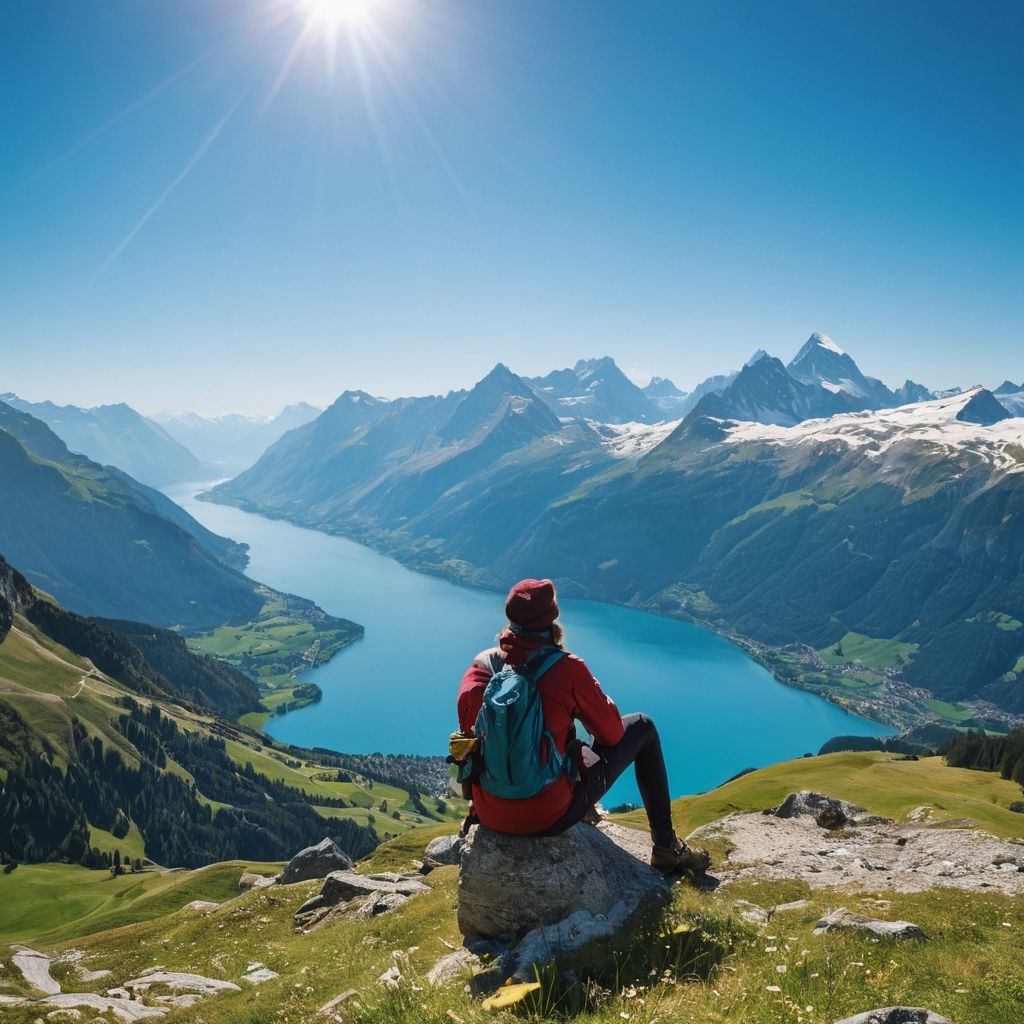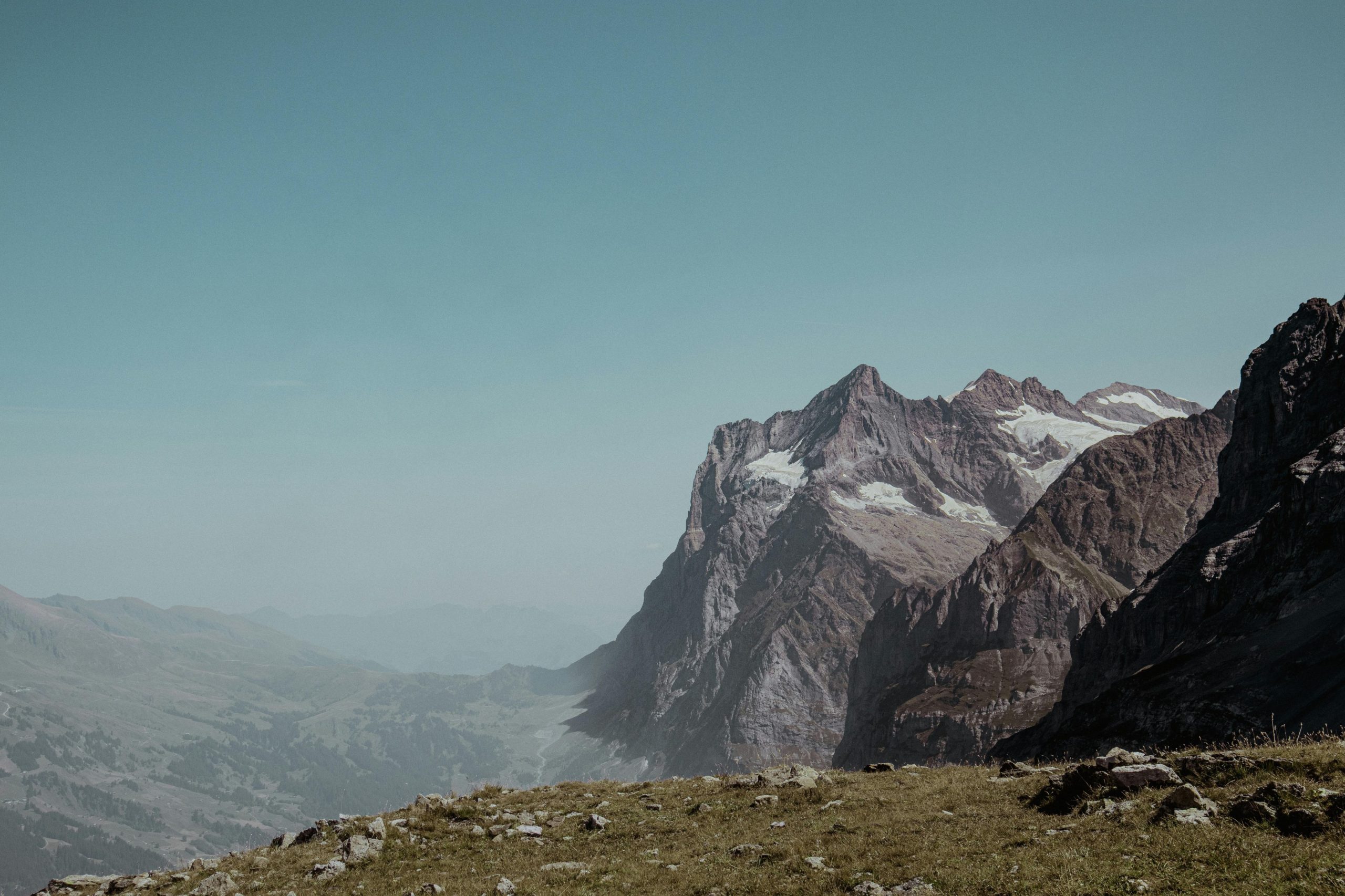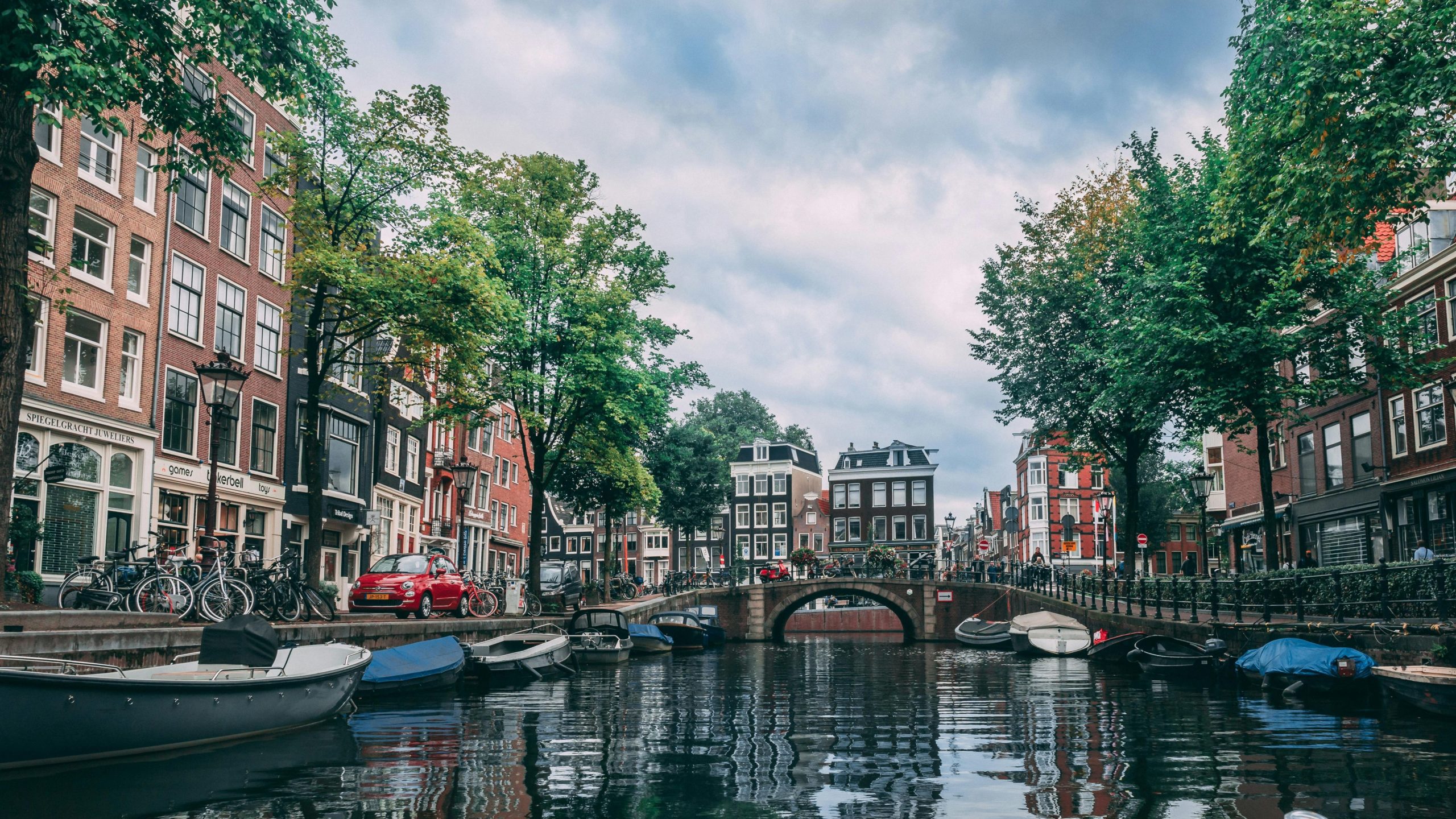Dreaming of backpacking through the picturesque landscapes of Switzerland?
Planning an adventure in this stunning country can be overwhelming with its wealth of sights and experiences.
A well-planned itinerary can help you experience the best of Switzerland, from the vibrant streets of Zurich to the serene heights of Zermatt.
Our comprehensive guide will take you through essential travel preparations, daily itinerary crafting, accommodation options, transportation tips, food explorations, top hiking trails, budget advice, luxury stays, and unique culinary tours to ensure your Swiss backpacking journey is nothing short of spectacular.
Essential Travel Preparation for Your Backpacking Switzerland Itinerary
Before setting off on your backpacking adventure through Switzerland, it’s crucial to pack strategically to handle the country’s diverse climates and activities. Weather in Switzerland can change rapidly, especially in the mountainous regions, where you might experience all four seasons in a single day. Essential items include a waterproof jacket, a warm layer like a fleece or light down jacket, and comfortable, durable hiking boots. For summertime, don’t forget a swimsuit and flip-flops, which are perfect for relaxing by the lakes or after a long hike. A sturdy backpack, ideally around 35L, will accommodate your clothing and essential gear without being too cumbersome.
Besides clothing, other critical preparations include securing comprehensive travel insurance that covers outdoor activities like hiking and possibly skiing if you plan to visit during winter. Also, it’s wise to familiarize yourself with some key phrases in the local languages. Switzerland has four official languages—German, French, Italian, and Romansh. Knowing simple phrases such as “Hello” (Grüezi in German, Bonjour in French, Ciao in Italian), “Thank you” (Danke, Merci, Grazie), and “Help” (Hilfe, Aide, Aiuto) can greatly enhance your interactions with locals and improve your overall experience. Always carry a small phrasebook or download a language translation app to help bridge any language gaps.
Finally, ensure your documentation is in order, including a valid passport and any necessary visas. It’s also beneficial to carry a Swiss Pass or a Half-Fare Card if you plan extensive travel by public transportation, as these can offer significant savings. Remember to:
- Keep digital and physical copies of important documents like your passport, insurance details, and emergency contacts.
- Pack a first aid kit, sun protection (sunglasses, sunscreen, lip balm), and a refillable water bottle to stay hydrated.
- Consider bringing a multi-functional knife and a portable power bank for your electronic devices. With these preparations in place, you’ll be set to enjoy the stunning beauty and adventure that Switzerland has to offer.
Crafting Your Daily Backpacking Switzerland Itinerary
Crafting your daily backpacking itinerary in Switzerland can be both exciting and overwhelming, given the country’s rich array of landscapes and cultural offerings. Start by identifying a few key destinations that you are most interested in, such as the bustling streets of Zurich, the historic charm of Lucerne, or the breathtaking Alpine scenery in Zermatt. It’s advisable to limit your base cities to one or two to avoid spending too much time in transit. From these bases, you can plan day trips to nearby attractions and hiking trails, ensuring a well-rounded experience without the hassle of constant packing and unpacking.
Once you’ve chosen your bases, sketch out a day-by-day plan. Each day should ideally include a main activity, such as a city tour, a hike, or a visit to a museum, complemented by lighter activities or significant rest periods. For example, if you’re planning to hike the trails near Grindelwald, consider a less demanding schedule the following day. This could include exploring local markets or spending a leisurely afternoon by a lake. Remember, the goal is to enjoy your trip, not rush through it.
For each day of your itinerary, consider travel logistics. How will you get from your accommodation to your activity? What time do the activities start, and how much does it cost to participate? This is where a detailed map and a schedule come into play. Highlights to consider include:
- Transport options: Train, bus, or rental bike?
- Activity costs: Entry fees for museums, cable car tickets for mountain summits.
- Meal planning: Will you pack a lunch, or eat out?
Lastly, always have a backup plan. Weather in Switzerland can be unpredictable, especially in mountainous regions. It’s wise to have alternative indoor activities planned in case of bad weather. Additionally, keep some flexibility in your schedule to accommodate any spontaneous decisions or discoveries. This balance of structure and spontaneity will help you make the most of your backpacking trip across Switzerland.
Accommodation Options for Backpackers in Switzerland
Another budget-friendly option is staying with locals through platforms like Couchsurfing, where you can find free accommodation and get a local’s perspective of the area. For those who prefer more privacy, budget hotels or Airbnb rentals are also worth considering, though they may cost a bit more. Always check for reviews and book in advance to secure the best rates, especially during peak tourist seasons.
Navigating Transportation During Your Swiss Backpacking Trip
When planning your daily travels, use apps like SBB Mobile, which provides schedules for all public transportation. This tool is invaluable for planning connections and ensuring you reach your destinations efficiently. If you prefer more flexibility, consider renting a car, though be aware of the high costs associated with parking and fuel in Switzerland. Remember, the key to smooth travel is planning your routes in advance and always having a backup option in case of unexpected changes.
Exploring Food Options While Backpacking in Switzerland
Exploring food options while backpacking in Switzerland can be a delicious journey through the country’s culinary traditions. For budget-conscious travelers, local supermarkets offer a variety of ready-to-eat meals and fresh ingredients that you can use to prepare your own meals. This is especially cost-effective if your accommodation includes kitchen facilities. Additionally, look out for discounts on items that are nearing their sell-by date, which can be a great way to save money.
If you want to try traditional Swiss cuisine without breaking the bank, consider eating out during lunch when many restaurants offer specials at reduced prices. Popular dishes to try include raclette, fondue, and rösti. For a quick and affordable meal on the go, local bakeries offer delicious sandwiches, pastries, and the famous Swiss chocolate. Always keep an eye out for local markets too, where you can sample a variety of fresh and local produce at reasonable prices.
Top Hiking Trails to Explore in Your Switzerland Backpacking Itinerary
Switzerland boasts some of the most spectacular hiking trails in the world, each offering unique landscapes and challenges suitable for different levels of hikers. For beginners, the Panorama Trail at Lake Thun is an excellent choice. This trail provides gentle paths with minimal elevation gain and breathtaking views of the lake and surrounding mountains. Another fantastic option for those seeking an easier hike is the Montreux Trail, which winds along the picturesque shores of Lake Geneva, offering stunning views and plenty of spots to relax and enjoy the natural beauty. These trails are well-marked and can be enjoyed without specialized hiking equipment, making them perfect for those new to hiking or looking for a leisurely day out in nature.
Intermediate hikers looking for a bit more challenge might consider the Eiger Trail. This trail offers an up-close view of the north face of the Eiger mountain and requires a bit more stamina and sure-footedness due to its steeper sections. The path is well-marked with red and white stripes, indicating a moderate level of difficulty. Here are some highlights of the trail:
- Scenic vistas: Panoramic views of the Grindelwald and Lauterbrunnen valleys.
- Trail features: A mix of rocky paths and smoother sections.
- Accessibility: Easily accessible via the Grindelwald train station, making it a convenient option for a day hike. For those seeking a high-altitude adventure, the Riffelberg Trail in Zermatt offers stunning views of the Matterhorn. This trail is more demanding and includes some exposed sections where hikers can look down into deep valleys and across to soaring peaks.
For experienced hikers ready to tackle more demanding routes, the Alpine Pass Route is a must-try. This multi-day trek stretches across several mountain passes, offering an immersive experience in the Swiss Alps’ rugged terrain. Hikers on this trail should be prepared for:
- Varied terrain: From lush meadows to rocky passes and potential snowfields.
- Navigation skills: Good map reading and route-finding abilities are essential.
- Equipment: Proper hiking boots, all-weather clothing, and possibly hiking sticks or even climbing gear for certain sections. The rewards of completing this trail are immense, with every new vista offering a sense of accomplishment alongside the natural beauty. Whether you’re a casual walker or a seasoned trekker, Switzerland’s diverse trails provide the perfect backdrop for an unforgettable hiking adventure, fitting seamlessly into any backpacking itinerary.
Budget Tips for Backpacking Across Switzerland
Backpacking across Switzerland can be an unforgettable experience, but it’s no secret that it can also be quite expensive. However, with some smart planning and insider tips, you can significantly cut down your costs. Accommodation is one of the biggest expenses you’ll face, so consider alternatives to traditional hotels. Staying with locals through platforms like Couchsurfing not only saves money but also provides a more authentic experience. Additionally, many hostels offer not just affordable beds but also kitchen facilities, allowing you to cook your own meals. Cooking is a great way to save, as eating out in Switzerland can be pricey. When shopping for groceries, look for local products which are often cheaper, and take advantage of discounts offered for items close to their sell-by date.
When it comes to sightseeing, you can save a lot by focusing on the numerous free activities available. Nature hikes, for instance, cost nothing and offer some of the most stunning views in the world. Most cities and towns in Switzerland also offer free walking tours—a great way to learn about the area without breaking the bank. If you plan to visit museums or other attractions, look into purchasing a city tourist pass, which can offer considerable savings. These passes often include free public transportation, making it easier and cheaper to explore. Remember, the key to budget travel is planning ahead and being flexible with your choices. By prioritizing and researching your options, you can enjoy all that Switzerland has to offer without emptying your wallet.
Luxury Stays to Consider in Your Switzerland Itinerary
For backpackers who want to sprinkle a bit of luxury into their Swiss adventure, considering a stay at one of Switzerland’s top luxury hotels can provide an unforgettable experience. Imagine spending a night at the Carlton Hotel St. Moritz, where elegance meets the pristine Alpine environment, offering a blend of top-tier comfort and breathtaking views. Alternatively, the Tschuggen Grand Hotel in Arosa stands out with its exclusive Tschuggen Bergoase spa, designed by the renowned architect Mario Botta. Here are some reasons to consider these upscale accommodations:
- Exceptional Service: Expect personalized attention and high-quality service that can make your stay exceptionally comfortable.
- Unique Amenities: From private ski lifts to gourmet dining experiences with Michelin-starred chefs, these hotels offer amenities that go beyond the standard.
If you’re venturing near Lausanne, the Royal Savoy Hotel & Spa offers a luxurious retreat with its historical architecture and modern spa facilities, perfect for rejuvenating after a long day of backpacking. For those staying in the eastern part of Switzerland, the Grand Resort Bad Ragaz is renowned for its thermal baths and medical wellness center, providing a blend of relaxation and health benefits. Here’s what you might consider when choosing a luxury stay:
- Location: Choose a hotel that aligns with your travel itinerary to minimize transit time and maximize relaxation.
- Special Offers: Look out for special packages that might include spa access, fine dining, or other exclusive experiences to enhance your stay without stretching your budget too much.
Enhance Your Backpacking Trip with INDULGE‘s Culinary Tours in Zurich
Enhancing your backpacking trip through Switzerland with INDULGE‘s curated culinary tours in Zurich can transform an ordinary journey into an extraordinary gastronomic adventure. Imagine weaving through the historic streets of Zurich West or the charming alleys of Old Town, guided by local culinary experts who are passionate about food. These tours are not just about tasting food; they’re about connecting with the culture and history of Zurich through its flavors. Each tour, lasting between 2.5 to 4 hours, is an opportunity to dive deep into the local and international cuisines that make Zurich a culinary hotspot. Participants will:
- Explore areas known for their vibrant food scenes
- Learn about the culinary history and innovations shaping Zurich today
- Enjoy a variety of tastings that may include famous Swiss specialties like Zürcher Geschnetzeltes or international dishes
Booking a culinary tour with INDULGE could be the highlight of your Swiss backpacking itinerary. It’s an enriching experience that offers more than just good food; it’s a doorway to understanding Zurich’s rich culinary heritage and contemporary food trends. These tours are designed to cater to both food enthusiasts and curious travelers, ensuring that everyone leaves with a satisfied palate and enriched knowledge. Benefits of joining an INDULGE tour include:
- Gaining insights from local chefs, sommeliers, and food experts
- Experiencing exclusive Wine & Dine events in some of Zurich’s most iconic venues
- Discovering new flavors and dishes that you might miss out on otherwise
For those interested in adding a flavorful layer to their travel experiences, visiting the INDULGE website at https://INDULGE-food.ch provides all the details needed to book your next culinary adventure in Zurich.
Frequently Asked Questions
How much would a 7 day Switzerland itinerary cost?
The cost of a 7-day itinerary in Switzerland can vary based on several factors such as the type of accommodation, transportation choices, and daily activities. For example, staying in hostels and using a Swiss Travel Pass for transportation could help keep costs manageable. Meals, entry fees for attractions, and other personal expenses should also be considered. A detailed budget would need to account for all these variables. It’s important to plan and research prices ahead of time to estimate the total cost accurately.
Is 7 days enough time in Switzerland?
Seven days in Switzerland can allow for a well-rounded experience, especially if you plan your itinerary carefully to include a mix of activities and sightseeing. Choosing one or two base cities and making day trips to nearby attractions can maximize your time and reduce the hassle of frequent packing and unpacking. This duration is sufficient to explore key destinations and enjoy activities like hiking, city tours, and culinary experiences, provided the travel logistics are well organized.








